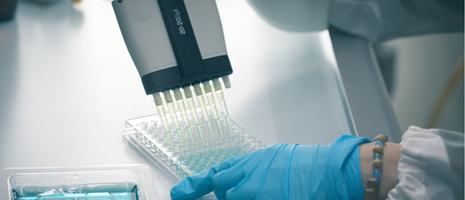
Approaches to Assay Characterization and Validation: Part 1- Limit of Detection and Lower Limit of Quantitation
By John Murray, Technical Applications Scientist
Introduction
The aim of this blog article is to provide Simoa® users with useful resources for common assay validation topics of Limit of Detection (LOD) and Lower Limit of Quantitation (LLOQ). The methods for determining detection and quantitation limits may vary in complexity depending on the assay development stage and applicable regulations. For example, in early development, it may be sufficient to approximate the LOD by simply interpolating the calibration curve, but for final validation, a more in-depth experimental and statistical approach using real samples may be necessary.
Guidelines
Some of the most referenced guidelines specifically for diagnostic immunoassay assay validation come from the Clinical and Laboratory Standards Institute (CLSI). These guidelines are published in a series of documents, such as CLSI EP17 – Evaluation of Detection Capability for Clinical Laboratory Measurement Procedures, 2nd Edition. In addition to the CLSI guidelines, another valuable set of guidelines for the validation of various analytical methods, not limited to immunoassays, is provided by the European Medicines Agency in their ICH Q2(R2) Validation of analytical procedures – Scientific guideline document. This guideline primarily focuses on analytical methods used in the quality control of medicines.
Estimating the Limit of Detection and Limit of Quantitation
The CLSI guidelines approach detection capability using three quality attributes of the assay: the Limit of Blank (LOB), Limit of Detection (LOD) and Limit of Quantitation (LOQ).
- LOB: The highest apparent analyte concentration expected to be found when replicates of a sample containing no analyte are tested.
- LOD: The lowest analyte concentration likely to be reliably distinguished from the LOB and at which detection is feasible.
- LOQ: The lowest concentration at which the analyte can not only be reliably detected but at which some predefined goals are met (i.e., precision and bias).
A highly sensitive assay is characterized by a low LOD; however, a low LOB is also necessary to achieve a low LOD (Figure 1). In any immunoassay there will be inherent background signal due to non-specific binding (e.g., weak interactions between the Detector antibody and the Capture surface and/or antibody), but steps can be taken to minimize this. When developing Homebrew assays for Simoa®, we typically recommend aiming for a blank signal of 0.005 – 0.05 average number of enzymes per bead (AEB). However, understanding the variability of blank samples and low concentration samples is key to evaluating the detection capabilities of an assay. According to the CLSI EP17 guidelines, a sample that contains analyte at the LOD should be distinguishable from the LOB 95% of the time.
Variables to consider when designing an experiment to evaluate detection limits include how many kit lots to test, the number of operators (if using an instrument with manual steps such as the SR-X), the number of days (inter-assay variability), how many different blank samples/low concentration samples to test, and how many total replicates of blank/low concentration samples to test. The LLOQ must be, by definition, equal to or greater than the LOD. Determining the LLOQ differs from the LOD in that predefined goals for precision and bias also need to be met. Often, the target for precision is the lowest analyte concentration that will yield a concentration coefficient of variation (CV) of 20% or less. Various methods can be used to determine the LLOQ and three methods used by Quanterix are described in the Technical Note available on the Customer Portal (TECH-0034; Lower Limit of Quantitation). The 4PL Assay Developer tool (also on the Customer Portal) uses a method known as CV Profiling to estimate the LLOQ from calibration curve data. The spreadsheet is not designed to be a validation tool for users (hence the calculations are hidden/locked), but it can be a useful tool in early assay development or to characterize the performance of the assay being developed or tested.